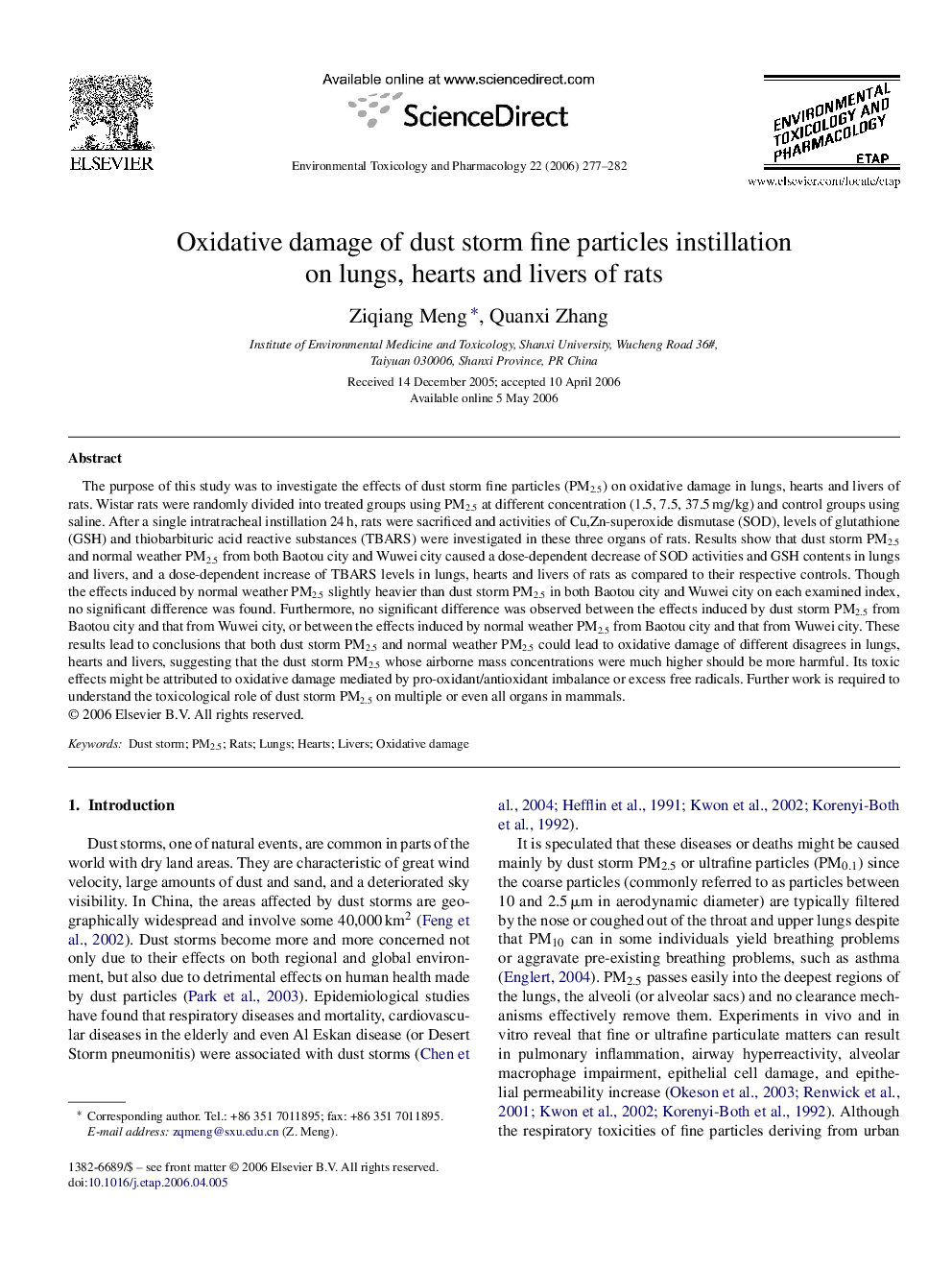| Article ID | Journal | Published Year | Pages | File Type |
|---|---|---|---|---|
| 2584681 | Environmental Toxicology and Pharmacology | 2006 | 6 Pages |
The purpose of this study was to investigate the effects of dust storm fine particles (PM2.5) on oxidative damage in lungs, hearts and livers of rats. Wistar rats were randomly divided into treated groups using PM2.5 at different concentration (1.5, 7.5, 37.5 mg/kg) and control groups using saline. After a single intratracheal instillation 24 h, rats were sacrificed and activities of Cu,Zn-superoxide dismutase (SOD), levels of glutathione (GSH) and thiobarbituric acid reactive substances (TBARS) were investigated in these three organs of rats. Results show that dust storm PM2.5 and normal weather PM2.5 from both Baotou city and Wuwei city caused a dose-dependent decrease of SOD activities and GSH contents in lungs and livers, and a dose-dependent increase of TBARS levels in lungs, hearts and livers of rats as compared to their respective controls. Though the effects induced by normal weather PM2.5 slightly heavier than dust storm PM2.5 in both Baotou city and Wuwei city on each examined index, no significant difference was found. Furthermore, no significant difference was observed between the effects induced by dust storm PM2.5 from Baotou city and that from Wuwei city, or between the effects induced by normal weather PM2.5 from Baotou city and that from Wuwei city. These results lead to conclusions that both dust storm PM2.5 and normal weather PM2.5 could lead to oxidative damage of different disagrees in lungs, hearts and livers, suggesting that the dust storm PM2.5 whose airborne mass concentrations were much higher should be more harmful. Its toxic effects might be attributed to oxidative damage mediated by pro-oxidant/antioxidant imbalance or excess free radicals. Further work is required to understand the toxicological role of dust storm PM2.5 on multiple or even all organs in mammals.
